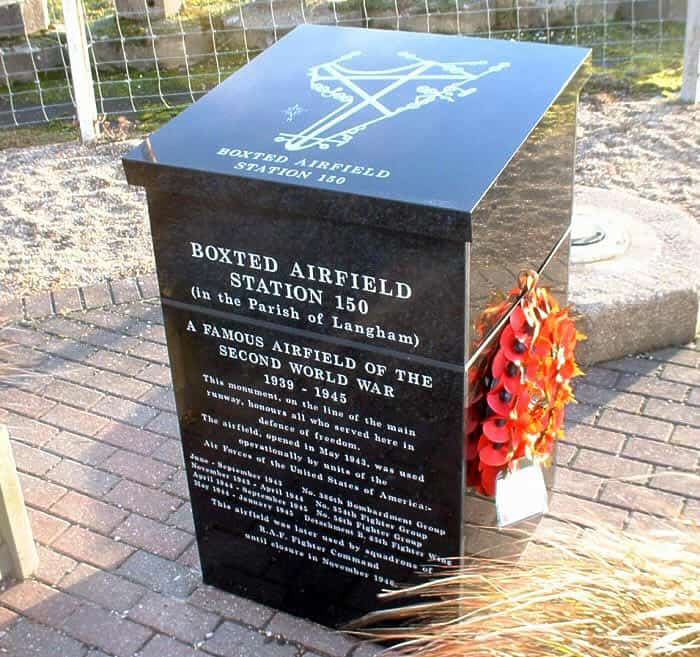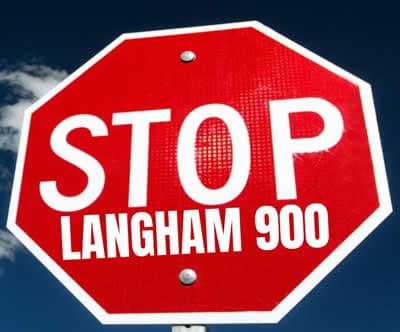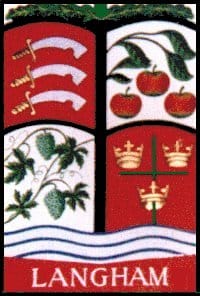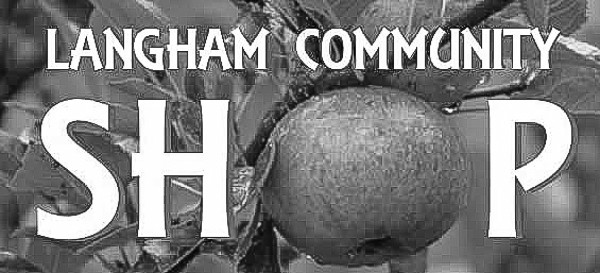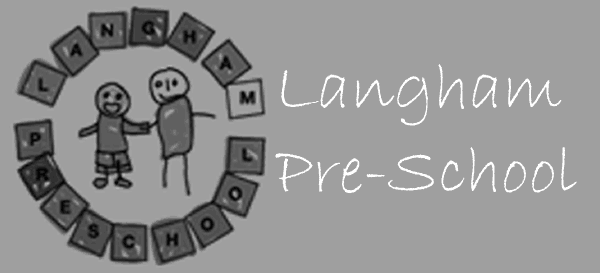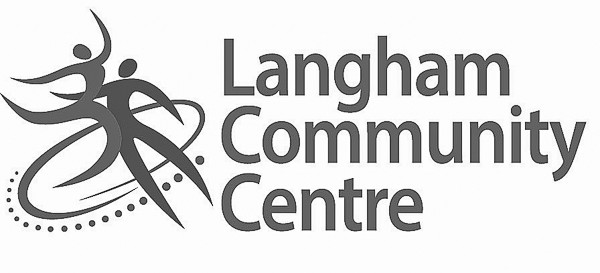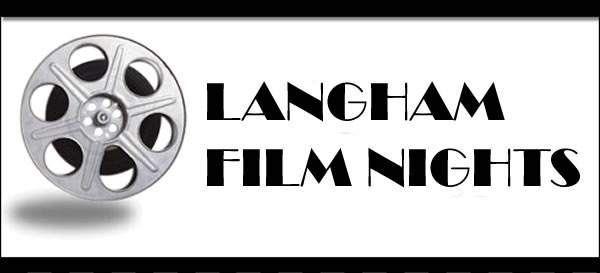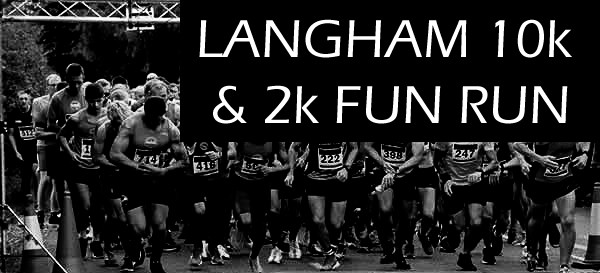BOXTED AIRFIELD (STATION 150)
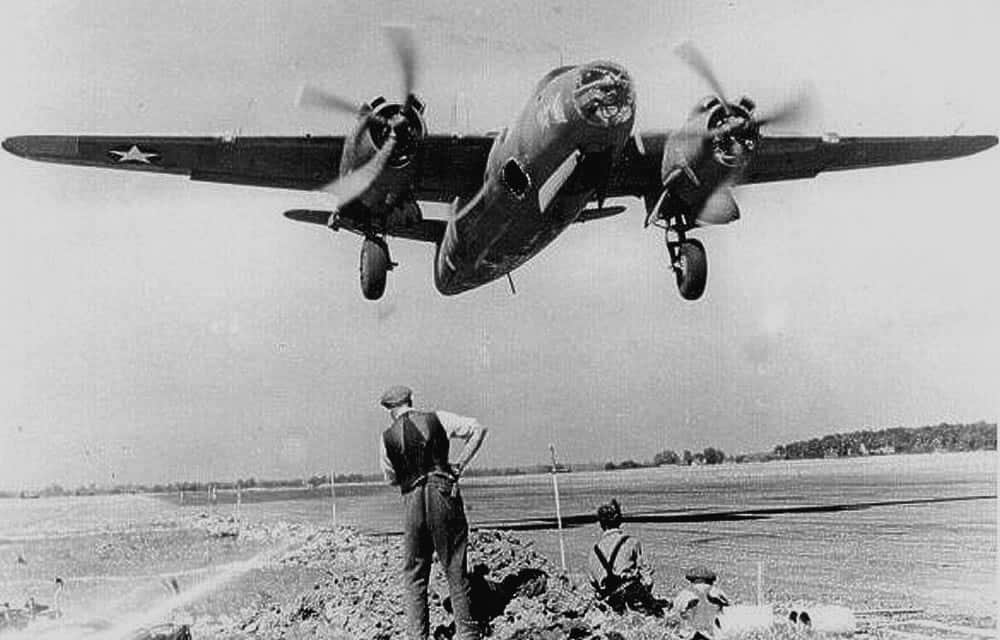
The airfield in Langham was one of the most important American airfields of the the Second World War. This is because of the outstanding war records of all three Groups stationed here.
Work begun on the building of the airfield in 1942. W & C French Ltd. was the main contractor, using both Irish and local labour. The airfield was available for flying by May 1943. There were three runways. The main runway was 2,000 yards long and then two intersecting runways of 1,400 yards each in length. The Base had accommodation for 2,900 personnel and there were two fuel dumps and the usual hangers. All temporary buildings were dispersed in woods and fields south of the airfield.
Generally, during the Second World War, it was the Air Ministry's general principle to name new airfields by the name of the village or parish in which they were built. Station 150 was an exception to this. The station was built to the west of the current A12 road, three miles north of Colchester, and was built entirely in the village of Langham. The station, however, took on the name of Boxted, another near-by village, as there was already an operational airfield known as Langham in Norfolk.
When the USAAF came to Langham in 1943, this country was already inured to the devastating effects of aerial warfare. We had experienced the heroic tragedy of Dunkirk, the Battle of Britain, and the devastation of many of our cities. Rationing had been in operation for nearly four years and everywhere there was stringent control of goods and services. There was also a "blackout" and all signposts and name-boards on stations, and in towns and villages had been removed or obliterated.
Into Langham came a force of some 3,000 "foreigners"! They had an immediate impact on the village and the towns and villages in the vicinity and their reception was, for the most part, welcoming. The Americans themselves were friendly and generous, particularly with their gifts of "candy" to the children which were received with delight as the allocation of sweets and chocolate in this country was strictly rationed. The pubs certainly did a roaring trade!
There was, of course, entertainment at the Base for the men stationed there and Glen Miller and his Band visited. The photo below shows the first meeting of Colonel Hubert (The Hub) Zemke and Captain Glenn Miller (Band Leader) at Boxted Aerodrome when he arrived on 6th August 1944. He later performed in the large hangar near Langham Lodge.
Work begun on the building of the airfield in 1942. W & C French Ltd. was the main contractor, using both Irish and local labour. The airfield was available for flying by May 1943. There were three runways. The main runway was 2,000 yards long and then two intersecting runways of 1,400 yards each in length. The Base had accommodation for 2,900 personnel and there were two fuel dumps and the usual hangers. All temporary buildings were dispersed in woods and fields south of the airfield.
Generally, during the Second World War, it was the Air Ministry's general principle to name new airfields by the name of the village or parish in which they were built. Station 150 was an exception to this. The station was built to the west of the current A12 road, three miles north of Colchester, and was built entirely in the village of Langham. The station, however, took on the name of Boxted, another near-by village, as there was already an operational airfield known as Langham in Norfolk.
When the USAAF came to Langham in 1943, this country was already inured to the devastating effects of aerial warfare. We had experienced the heroic tragedy of Dunkirk, the Battle of Britain, and the devastation of many of our cities. Rationing had been in operation for nearly four years and everywhere there was stringent control of goods and services. There was also a "blackout" and all signposts and name-boards on stations, and in towns and villages had been removed or obliterated.
Into Langham came a force of some 3,000 "foreigners"! They had an immediate impact on the village and the towns and villages in the vicinity and their reception was, for the most part, welcoming. The Americans themselves were friendly and generous, particularly with their gifts of "candy" to the children which were received with delight as the allocation of sweets and chocolate in this country was strictly rationed. The pubs certainly did a roaring trade!
There was, of course, entertainment at the Base for the men stationed there and Glen Miller and his Band visited. The photo below shows the first meeting of Colonel Hubert (The Hub) Zemke and Captain Glenn Miller (Band Leader) at Boxted Aerodrome when he arrived on 6th August 1944. He later performed in the large hangar near Langham Lodge.
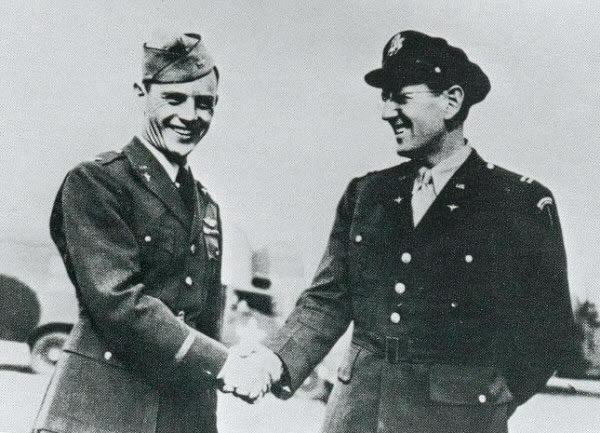
Four American Units spent time stationed at the Airfield. To learn more about each, click on the buttons below
After the USAAF left, the airfield reverted to the RAF and the night fighter Mosquitoes of 25 Squadron, and the Meteors of 124 and 234 Squadrons. However because of the proximity of Colchester and the higher speed of post war aircraft the airfield closed in 1947. For some years after this the runways and the grass continued to be used by light aircraft and by crop spraying aircraft.
In 1961 the two hangers and many other buildings were sold and in 1963 the land was offered back to the original owners. After that the majority of the airfield became apple orchards although parts of each runway remained as did some of the perimeter track.
In 2006 the airfield was sold and much of it is now devoted, amongst other crops, to growing onions.
In 1992 the Parish Council had leased some land where the main runway crosses Park Lane and erected a Monument to those who served on the airfield. It incorporates three of the large concrete bases used for landing lights. When the land was sold in 2006 the Parish Council bought the land immediately surrounding the Monument and started to plan its renovation. The first phase of this was completed in time for Remembrance Sunday 2007 and actual Monument is now clad in black granite. The second phase of the renovation involved the building of a low wall behind the Monument and landscaping of the immediate area. This was completed in time for a ceremony on April 19 2008, marking its restoration.
In 1961 the two hangers and many other buildings were sold and in 1963 the land was offered back to the original owners. After that the majority of the airfield became apple orchards although parts of each runway remained as did some of the perimeter track.
In 2006 the airfield was sold and much of it is now devoted, amongst other crops, to growing onions.
In 1992 the Parish Council had leased some land where the main runway crosses Park Lane and erected a Monument to those who served on the airfield. It incorporates three of the large concrete bases used for landing lights. When the land was sold in 2006 the Parish Council bought the land immediately surrounding the Monument and started to plan its renovation. The first phase of this was completed in time for Remembrance Sunday 2007 and actual Monument is now clad in black granite. The second phase of the renovation involved the building of a low wall behind the Monument and landscaping of the immediate area. This was completed in time for a ceremony on April 19 2008, marking its restoration.
